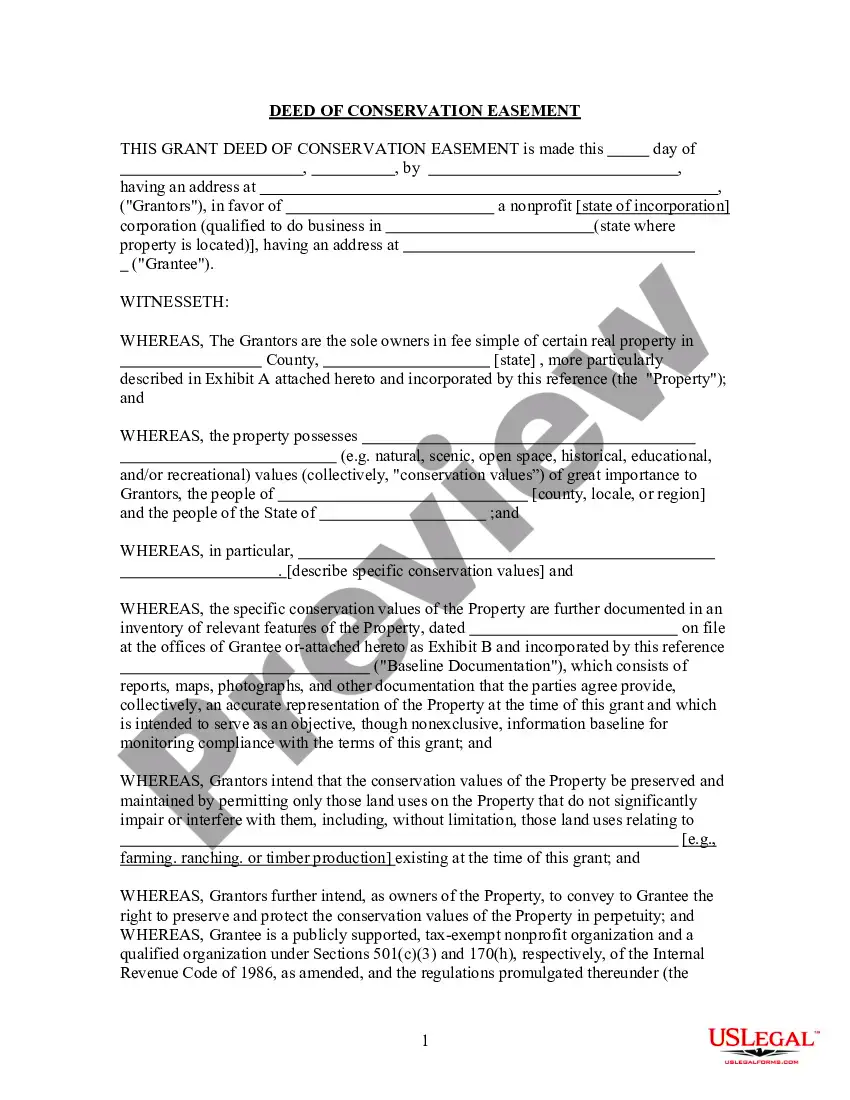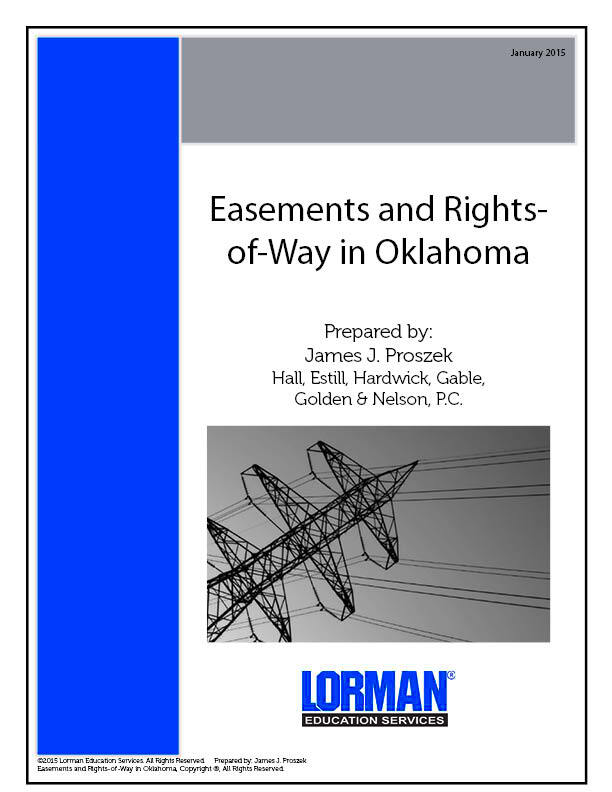Easement Laws in Oklahoma Explained
Navigating easement laws in Oklahoma can be quite challenging, especially if you’re not familiar with real estate regulations. An easement essentially grants one party permission to use another partys land for a purpose. For instance picture a trail cutting through your garden that your neighbor takes to reach their home that trail represents an easement. Having witnessed family property disputes I understand the importance of comprehending these laws whether you’re a property owner or someone curious about land use rights. In Oklahoma the easement rules are established to strike a balance, between the rights of landowners and those seeking access.
What is an Easement?

An easement is a right that allows a person to use a section of another persons property for a specific reason. Its like getting approval to walk or utilize a part of someone elses land even if you dont own it. Here are some important points to keep in mind.
- Definition: An easement is not ownership but a right to use the land for a specified purpose.
- Types: Easements can be for utilities, pathways, or even certain activities like fishing on private property.
- Duration: Some easements are permanent, while others might be temporary.
For example my cousin found himself in a situation where an old road easement ran through his recently acquired property. By understanding the details of the easement he was able to determine his rights and the restrictions it placed on him. Easements can be tricky with their legal jargon and stipulations but having a grasp of the fundamentals can help avoid numerous potential problems.
Types of Easements in Oklahoma
In Oklahoma there are different kinds of easements, each serving a specific purpose. Familiarizing yourself with these types can boost your confidence when it comes to handling property transactions and conflicts.
- Right of Way Easement: This is one of the most common types, allowing passage through another’s property. It’s like having a dedicated path or road to access your own property.
- Utility Easement: These easements permit utility companies to install and maintain infrastructure like power lines, water pipes, or sewer systems. They’re essential for ensuring public services are operational.
- Conservation Easement: This type restricts land use to preserve natural resources or landscapes. It’s particularly useful for protecting wildlife habitats or scenic views.
- Negative Easement: Unlike the others, a negative easement restricts the landowner from doing something on their property, like blocking a scenic view that benefits the easement holder.
Based on my personal experiences grasping the nuances of these easement types proved valuable when assisting a friend interested in buying land with an existing utility easement. It ensured that everyone involved was aware of their rights and obligations preventing any potential disputes down the line. Each type of easement comes with its own set of rules and consequences so having this knowledge can spare you from unexpected challenges.
How Easements are Created
While setting up an easement may appear to be a process it usually begins with straightforward discussions among property owners. In Oklahoma there are various methods to establish easements each with its own steps and consequences. Based on my observations I find that grasping the process of creation aids in preventing misinterpretations later on. Here’s a breakdown of how it typically unfolds.
- Written Agreement: The most straightforward method is a written contract between landowners. This document outlines the purpose, duration, and specific details of the easement. It’s akin to a handshake agreement but with legal backing.
- Implied Easement: Sometimes, an easement is not explicitly written down but is implied by the circumstances. For instance, if a property is landlocked, the owner might have an implied right of way to access their land.
- Easement by Prescription: Similar to “adverse possession,” this type of easement is gained through continuous, open, and hostile use over a statutory period. My neighbor once used a strip of land for years without permission, eventually gaining an easement through prescription.
- Easement by Necessity: If a property is landlocked and needs access, an easement by necessity can be granted. This ensures the property isn’t left isolated without access.
Every approach has its own legal obligations that can affect property worth and usage. I’ve noticed that many individuals gain advantages by grasping these procedures as they shed light on the rights and duties associated, with various kinds of easements.
Legal Rights and Responsibilities of Easement Holders
Having an easement gives you some perks but also brings along some obligations. Being aware of the aspects can help avoid misunderstandings and make interactions run more smoothly. Lets dive into what you need to know.
- Rights of Easement Holders: As an easement holder, you generally have the right to use the property for the specified purpose. For example, if you have a right-of-way easement, you can traverse the land to access your property.
- Responsibilities: With rights come responsibilities. Easement holders must use the property responsibly, avoiding damage or excessive interference with the landowner’s use. It’s like borrowing someone’s car—you must take good care of it.
- Maintenance: Depending on the easement agreement, you might be responsible for maintaining the easement area. This could include keeping a path clear or ensuring utility lines are in good condition.
- Legal Boundaries: Easement holders must respect the boundaries and conditions set in the easement agreement. For example, using a utility easement for recreational purposes would breach the agreement.
From what I’ve seen sorting out these rights and duties from the get go has prevented a lot of arguments. It’s much more beneficial to establish a mutual understanding to make sure everyone is on the same page with their expectations.
Common Disputes and How to Resolve Them
Disagreements regarding easements can get quite complicated, much like the jargon used to discuss them. In my experience these conflicts often stem from miscommunications or unfulfilled expectations. Let’s explore issues that commonly arise and some effective approaches to address them.
- Obstruction of Easements: Sometimes, a landowner might block an easement, either intentionally or unintentionally. This can be resolved by discussing the issue and referring to the easement agreement. Legal action is a last resort.
- Maintenance Disagreements: Issues often arise regarding who should maintain an easement. Clear terms in the agreement can help, but if disputes occur, mediation or arbitration can be useful in reaching a fair solution.
- Changes in Use: Changes in how an easement is used can lead to conflicts. For example, using a path meant for foot traffic for vehicle access could be contentious. Communicating any changes and getting consent can prevent disputes.
- Terminating Easements: Disagreements may also arise over whether an easement should be terminated. Reviewing the original terms and negotiating a settlement can help resolve these issues.
Based on what Ive encountered I believe that being open and ready to find common ground is crucial when it comes to settling conflicts. Getting legal guidance can help avoid problems from getting worse by making sure both sides are aware of their rights and responsibilities.
How to Terminate an Easement
Ending an easement is similar to wrapping up a contract. It requires thought and following procedures. Based on what I’ve observed knowing the right way to terminate an easement can help avoid a lot of complications. Here’s a guide on how to do it:
- Mutual Agreement: The simplest way to terminate an easement is through mutual agreement between the parties involved. This might involve negotiating terms and drafting a release document that formally ends the easement. It’s akin to both sides agreeing to close a chapter amicably.
- Expiration of Terms: Some easements are set to expire after a certain period or upon the completion of a specific event. If the easement was established for a set term, it automatically ends when that term is over. Think of it as an automatic contract renewal unless stated otherwise.
- Non-Use or Abandonment: If the easement hasn’t been used for a long time and there’s evidence of abandonment, it might be terminated. I remember helping a friend who successfully argued for easement termination based on years of non-use.
- Legal Action: In cases where other methods aren’t feasible, seeking a court order for termination might be necessary. This involves filing a lawsuit and proving that the easement is no longer needed or that it’s causing undue hardship.
Different approaches come with their own legal considerations and in many cases it’s possible to combine them. Keeping thorough records and seeking advice from a lawyer is crucial to ensure that the termination process is carried out smoothly.
Impact of Easement Laws on Property Transactions
Easement regulations have an influence on property deals and their effects may not always be apparent at first glance. In my view grasping these nuances can greatly impact the process of purchasing or selling real estate. Here are some key points to remember.
- Property Value: Easements can influence a property’s market value. For instance, a property with a utility easement might be less attractive to buyers due to potential access issues or maintenance requirements. I’ve seen how this has affected several real estate deals in my circle.
- Disclosure Requirements: Sellers are typically required to disclose existing easements to potential buyers. Failure to do so can lead to legal issues and affect the sale. Transparency is crucial to avoid future disputes.
- Negotiation Points: Easements can become a negotiation point in property transactions. Buyers might seek reductions in price or request modifications to the terms of the easement. Knowing how easements impact negotiations can be a powerful tool.
- Legal Encumbrances: Easements are legal encumbrances that can affect the transfer of property. Buyers need to be aware of any easements that might limit their use of the property. Understanding these encumbrances can help in making informed decisions.
Based on what I’ve seen dealing with property transactions involving easements calls for careful thought and effective communication. It’s crucial to do your homework and grasp how easements can affect the worth and utility of the property you’re working with.
Consulting with a Legal Professional
When it comes to easements getting advice from a lawyer can really make a difference. Based on my experience having a legal expert help you navigate the intricacies of easement regulations can have a big impact. Here are reasons why its important to seek counsel.
- Expertise: Lawyers specializing in property law understand the nuances of easements and can offer advice tailored to your specific situation. They help in navigating legal jargon and ensuring that your rights are protected.
- Documentation: A legal professional can help draft or review easement agreements and termination documents, ensuring that everything is legally sound. Proper documentation is essential to avoid future disputes.
- Dispute Resolution: If conflicts arise, a lawyer can provide guidance on how to handle disputes effectively. They can represent your interests in negotiations or legal proceedings, aiming for a fair resolution.
- Compliance: Ensuring that all actions related to easements comply with local laws and regulations is crucial. A lawyer helps in understanding and adhering to these legal requirements, preventing potential legal issues.
In my opinion having a lawyer with expertise can really help ease the challenges along the way. It ensures that you stay informed and safeguarded throughout the process whether you are handling existing easements or considering creating or ending one.
FAQ
When exploring the realm of easements, it’s common to encounter inquiries. Having navigated through different matters, I recognize the importance of obtaining precise information. Below are some questions regarding easements that could assist in addressing common concerns:
- What happens if I ignore an easement on my property? Ignoring an easement can lead to legal disputes and possible court actions. Easement holders have the right to enforce their access, which could result in costly legal battles. It’s always best to address any easement issues directly and in accordance with the agreement.
- Can I modify the terms of an easement? Yes, modifications are possible if all parties involved agree to the changes. It’s essential to document any amendments properly to ensure they are legally binding and to avoid future misunderstandings.
- How can I find out if my property has an easement? You can check your property’s title deed or land records for any easement details. Consulting with a real estate lawyer or title company can also provide clarity on any easements that may affect your property.
- Are easements transferable to new property owners? Generally, easements are tied to the property and not the owner, so they typically transfer with the property. New owners must honor existing easements unless they are formally terminated or modified.
- What should I do if my easement is being violated? If you believe an easement is being violated, the first step is to communicate with the other party to resolve the issue amicably. If that doesn’t work, seeking legal advice and possibly pursuing mediation or legal action might be necessary.
These frequently asked questions are designed to give you a good grasp of easements and how to navigate different scenarios. If you have questions seeking advice from a legal expert can provide you with personalized assistance.
Conclusion
Easement regulations can be complex, yet grasping their intricacies is crucial for seamless property ownership and transactions. Whether you’re navigating the establishment termination or conflicts related to easements effective communication and sound legal guidance are vital. Through my personal encounters I’ve learned that tackling easement matters with care and foresight can help avoid numerous typical issues and ensure that your property dealings are, transparent and equitable.


